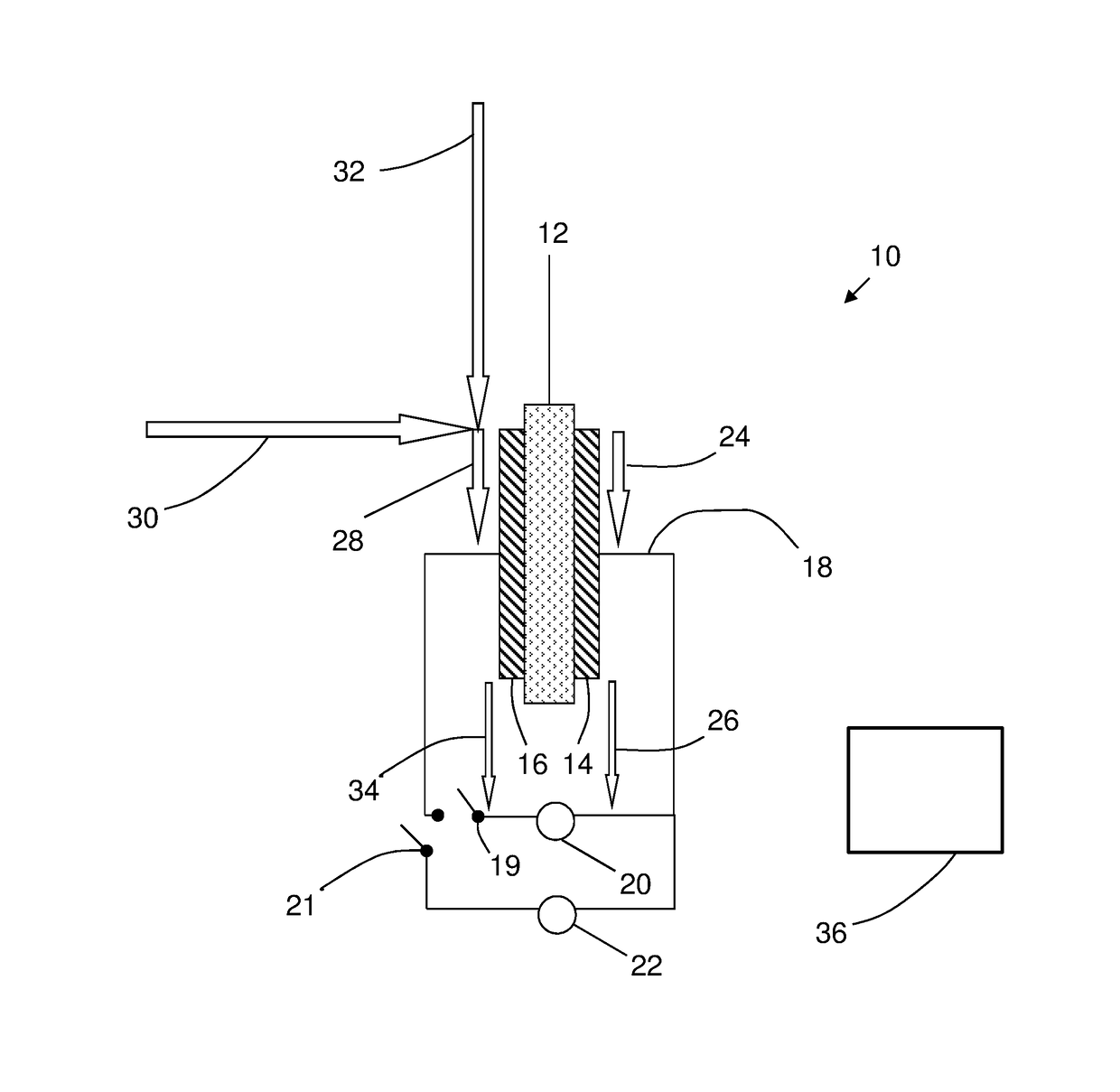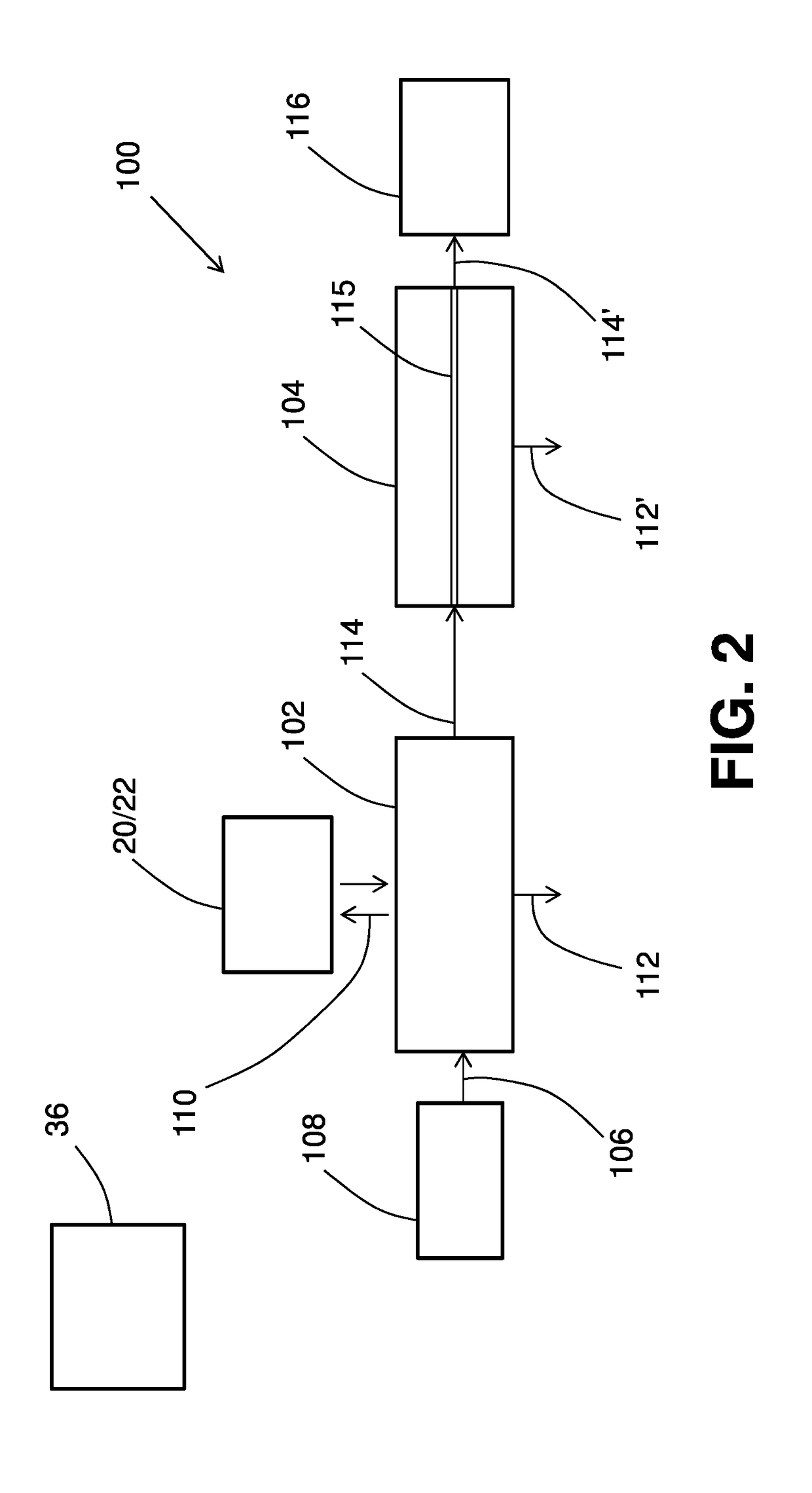On-board vehicle inert gas generation system
a gas generation system and inert gas technology, applied in the field of vehicles, can solve the problems of reducing engine power, increasing aircraft payload, and maintaining sufficient compressed air pressure to meet pneumatic demands, and achieve the effect of greater oxygen permeability
- Summary
- Abstract
- Description
- Claims
- Application Information
AI Technical Summary
Benefits of technology
Problems solved by technology
Method used
Image
Examples
Embodiment Construction
[0013]As mentioned above, the on-board vehicle inert gas system comprises an electrochemical cell. The term “vehicle” includes any powered conveyance device, including but not limited to aircraft, marine vessels, railroad engines, or roadway motor vehicles. In some embodiments, the vehicle is an aircraft. In some embodiments, the vehicle is a marine vessel such as a marine vessel fueled by liquefied natural gas (LNG). Referring now to the Figures, in which the same numbering may be used in more than one Figure to represent the same feature without the necessity of explicit repetition in the description for each Figure, FIG. 1 schematically depicts an electrochemical cell 10. In this description, a single electrochemical cell is shown for ease of illustration; however, in practice there would typically be a plurality of cells electrically connected in series as a stack and perhaps a plurality of stacks connected either in series or in parallel. The electrochemical cell 10 comprises a...
PUM
 Login to View More
Login to View More Abstract
Description
Claims
Application Information
 Login to View More
Login to View More - R&D
- Intellectual Property
- Life Sciences
- Materials
- Tech Scout
- Unparalleled Data Quality
- Higher Quality Content
- 60% Fewer Hallucinations
Browse by: Latest US Patents, China's latest patents, Technical Efficacy Thesaurus, Application Domain, Technology Topic, Popular Technical Reports.
© 2025 PatSnap. All rights reserved.Legal|Privacy policy|Modern Slavery Act Transparency Statement|Sitemap|About US| Contact US: help@patsnap.com



